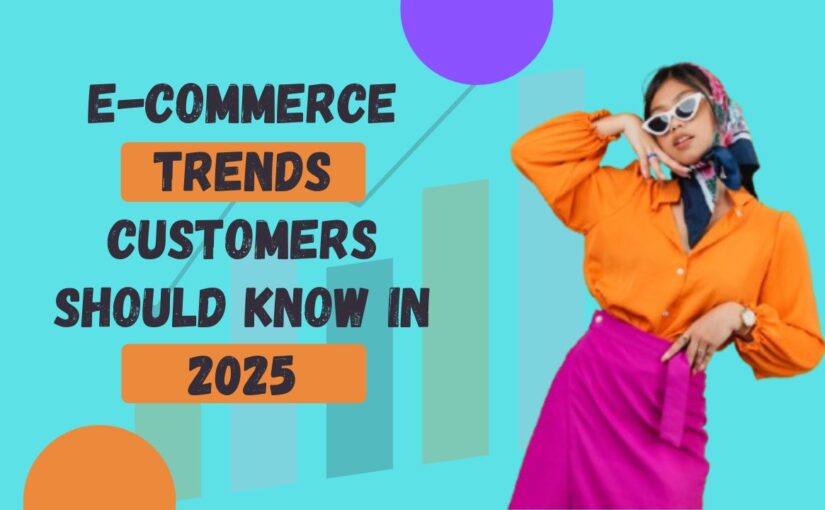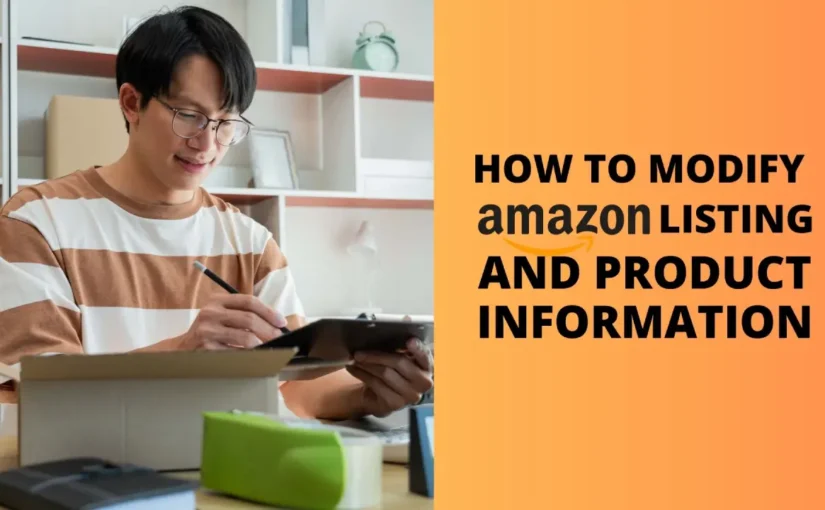Selling on Amazon is like stepping into a bustling digital marketplace where millions of buyers and sellers collide daily. With over 2.5 million active sellers and counting, standing out feels like finding a needle in a haystack. But here’s the good news: you don’t need to reinvent the wheel to succeed.
The secret lies in mastering your product listings—and that’s where Amazon product listing services come into play. Whether you’re a newbie or a seasoned seller, these hacks will transform your listings from overlooked to irresistible. Let’s dive into the game-changing tips you’ll wish you’d known sooner.
Why Your Amazon Listing Is Make-or-Break
Before we jump into the hacks, let’s get one thing straight: your product listing is your storefront, your sales pitch, and your first impression—all rolled into one. A poorly optimized listing is like a dusty shop window; it turns customers away before they even step inside. On the flip side, a polished, strategic listing can skyrocket your visibility, clicks, and conversions.
That’s where Amazon product listing services shine. These experts—or the tactics they use—help you crack Amazon’s algorithm (hello, A9!) and appeal to real human buyers. Ready to level up? Here are the hacks that’ll take your listings from meh to must-have.
Hack #1: Nail Your Title Like a Pro
Your title is the first thing buyers see, and it’s your golden ticket to showing up in search results. Amazon gives you 200 characters to work with, so make every single one count. Here’s the trick: front-load your title with your primary keyword—in this case, something tied to your product and Amazon product listing services—then sprinkle in descriptive, high-impact words.
How to Do It:
- Formula: [Brand] + [Primary Keyword] + [Key Features/Benefits]
- Example: “PeakPulse Wireless Earbuds – Noise-Canceling, 20-Hour Battery, Waterproof”
- Don’t: Stuff it with random keywords like “cheap, best, sale”—Amazon hates that, and so do buyers.
A well-crafted title boosts your search ranking and grabs attention. If you’re outsourcing to Amazon product listing services, they’ll fine-tune this for you, but you can DIY it with a little practice.
Hack #2: Bullet Points That Sell, Not Tell
Those five bullet points under your product title? They’re not just filler—they’re your chance to hook buyers and seal the deal. Most sellers waste them by listing boring specs. Instead, focus on benefits that solve problems or spark desire.
How to Do It:
- Start with the customer’s pain point, then offer your solution.
- Example:
- “Sick of Tangled Cords? Enjoy Hassle-Free Listening with True Wireless Design”
- “Need All-Day Power? Get 20 Hours of Playtime on a Single Charge”
- Use caps for the first few words to make them pop (Amazon allows this).
Amazon product listing services often emphasize this because it’s where psychology meets strategy. Buyers skim, so give them reasons to care—fast.
Hack #3: Images That Stop the Scroll
Amazon shoppers are visual creatures. Your main image is your billboard, and your secondary images are your sales team. Skimp here, and you’re toast. Professional Amazon product listing services live by this rule: high-quality, eye-catching visuals are non-negotiable.
How to Do It:
- Main Image: White background, product-only, filling 85% of the frame (Amazon’s rule).
- Secondary Images: Show it in action—lifestyle shots, infographics, close-ups of features.
- Hack: Add text overlays on secondary images (not the main one) to highlight benefits like “Waterproof” or “Lightweight.”
A blurry or cluttered image screams “amateur.” Invest in good photography—or let Amazon product listing services handle it—and watch your click-through rate soar.
Hack #4: Keywords Are Your Secret Weapon
Amazon’s search engine thrives on keywords, but cramming them into your title is a rookie mistake. Instead, use the backend search terms (hidden from buyers) to load up on relevant phrases. This is where Amazon product listing services can save you hours of guesswork.
How to Do It:
- Research with tools like Helium 10 or Jungle Scout—or hire a service to do it.
- Target long-tail keywords like “wireless earbuds for running” or “noise-canceling headphones for travel.”
- Add 2-3 variations of your core keyword (e.g., “Amazon product listing help,” “listing optimization services”).
Pro tip: Don’t repeat words already in your title or bullets—Amazon ignores duplicates. Spread the love and cover more search ground.
Hack #5: Pricing That Wins the Buy Box
Price isn’t just a number; it’s a strategy. Winning the Buy Box (that golden “Add to Cart” button) often comes down to competitive pricing. Amazon product listing services analyze your niche to find the sweet spot, but you can hack it yourself too.
How to Do It:
- Check competitors’ prices—aim to match or slightly undercut without slashing your margins.
- Use Amazon’s “Automate Pricing” tool to stay dynamic.
- Bundle products (e.g., earbuds + case) to justify a higher price point.
Buyers love value. Pair smart pricing with a killer listing, and you’re golden.
Hack #6: Leverage Enhanced Brand Content (If You’re Brand Registered)
If you’re a brand owner, Enhanced Brand Content (EBC) or A+ Content is your VIP pass to a standout listing. It’s like a mini webpage within your listing—perfect for storytelling and visuals.
How to Do It:
- Add comparison charts, lifestyle images, and a brand story.
- Highlight what makes you unique (e.g., “Designed by audiophiles for audiophiles”).
- Keep it scannable—buyers won’t read a novel.
Amazon product listing services often include EBC design, but you can DIY with Amazon’s free builder. It’s a hack worth the effort—studies show it can boost conversions by up to 10%.
Hack #7: Reviews: The Trust Factor You Can’t Ignore
Reviews are the lifeblood of Amazon sales. A listing with zero or bad reviews is a ghost town. You can’t buy reviews (don’t even try—Amazon will slap you), but you can nudge them along.
How to Do It:
- Use Amazon’s “Request a Review” feature after delivery—it’s polite and effective.
- Enroll in the Vine program for early reviews (if you’re launching).
- Deliver a stellar product—happy customers leave happy feedback.
Amazon product listing services can’t generate reviews for you, but they’ll optimize your listing to encourage them. Trust is everything.
Hack #8: Spy on Competitors (Ethically)
Your competitors aren’t the enemy—they’re your cheat sheet. Analyze their listings to see what works and where they flop. Amazon product listing services do this as a core strategy, but you can too.
How to Do It:
- Search your product category, filter by “Best Sellers,” and study the top dogs.
- Note their keywords, image styles, and bullet point phrasing.
- Look for gaps—are they missing a feature you offer? Highlight it.
Tools like AMZScout or even manual browsing can uncover goldmines. Just don’t copy—improve.
Hack #9: Optimize for Mobile (Because Everyone’s on Their Phone)
Over 60% of Amazon shoppers browse on mobile. If your listing looks like a mess on a small screen, you’re losing sales. Amazon product listing services prioritize mobile optimization, and you should too.
How to Do It:
- Keep titles under 80 characters (they truncate on mobile).
- Use short, punchy bullet points.
- Test your images—do they load fast and look clear on a phone?
Preview your listing in Seller Central’s mobile view. A minor adjustment yields a significant benefit.
Hack #10: Test, Tweak, Repeat
The biggest hack of all? Your listing isn’t set-it-and-forget-it. Amazon’s a living ecosystem—trends shift, competitors adapt, and buyer behavior evolves. Amazon product listing services often include ongoing optimization, but you can DIY this too.
How to Do It:
- Run A/B tests on titles or images via Amazon’s “Manage Your Experiments.”
- Track performance with Seller Central analytics—watch click-through and conversion rates.
- Update keywords seasonally (e.g., “gift” around holidays).
Stay nimble, and you’ll stay ahead.
Why Amazon Product Listing Services Might Be Your Shortcut
Let’s be real: mastering these hacks takes time, trial, and error. If you’re juggling a business or launching multiple products, Amazon product listing services can be a game-changer. They bring expertise—keyword research, pro photography, copywriting finesse—so you can focus on scaling. Think of them as your co-pilot, not a crutch.
What They Offer:
- Full listing audits and overhauls.
- Data-driven keyword strategies.
- Eye-popping visuals and EBC design.
Not ready to hire? No sweat—these hacks give you a solid DIY foundation.
Final Thoughts: Start Hacking Your Way to Success
Amazon’s a beast, but it’s tamable. With these hacks—killer titles, benefit-driven bullets, scroll-stopping images, and more—you’ll turn your listings into buyer magnets. Whether you go solo or tap Amazon product listing services for backup, the power’s in your hands. Stop wishing you’d known these sooner—start using them today. Your sales will thank you.
What’s your favorite hack from this list? Drop a comment below, or let me know if you’ve got a listing that needs a little love—I’m here to help!






